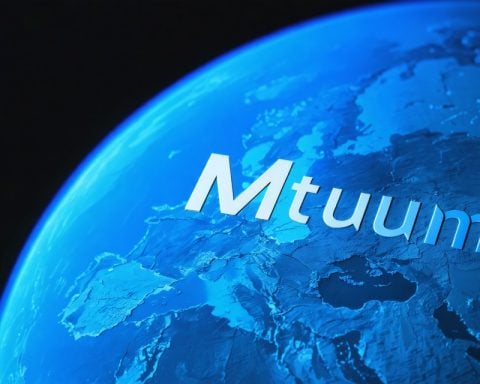A groundbreaking milestone has been reached in space communications. The European Space Agency (ESA) teamed up with Telesat to connect a Low Earth Orbit (LEO) satellite to ground stations using pioneering 5G Non-Terrestrial Network (NTN) technology. This innovative connection promises to transform the landscape of communication, making it as simple as using a smartphone.
This monumental achievement could enhance emergency response mechanisms, improve healthcare accessibility in rural regions, and optimize industrial functions globally, particularly in remote areas often overlooked. Earlier this year, a collaborative agreement allowed ESA access to Telesat’s LEO 3 satellite, instrumental for testing applications requiring minimal latency.
Utilizing Amarisoft’s advanced 5G solutions, the team successfully maintained a stable connection with the satellite as it traversed the sky, showcasing the system’s resilience. Unlike previous experiments with stationary satellites, this is the first demonstration of 5G NTN technology linked to a fast-moving LEO satellite.
The implications of this success are vast, including enabling remote surgeries, supporting autonomous transport systems, and boosting connectivity for disaster relief teams in difficult-to-reach locations. It also enhances in-flight internet capabilities for travelers.
This experiment emphasizes ESA’s commitment to advancing broadband satellite access through open standards, paving the way for future connectivity innovations like IRIS². Importantly, it suggests a future where mobile devices could communicate directly with satellites, minimizing reliance on terrestrial networks.
Revolutionizing Space Communications: The Future of 5G NTN Technology
Introduction to 5G Non-Terrestrial Network Technology
Recently, the European Space Agency (ESA) and Telesat achieved a remarkable breakthrough by successfully connecting a Low Earth Orbit (LEO) satellite to ground stations using advanced 5G Non-Terrestrial Network (NTN) technology. This trailblazing development is set to redefine communication systems, making them as accessible and user-friendly as utilizing a smartphone.
Key Features of 5G NTN Technology
1. Reduced Latency: By employing LEO satellites, communication latency is significantly reduced, which is crucial for applications requiring real-time responses, such as remote surgeries and autonomous vehicles.
2. Broad Accessibility: The technology enhances communications in rural and remote regions, ensuring that healthcare, industrial functionality, and emergency responses are streamlined.
3. Integration with Smartphones: The ultimate aim of this technology is to enable direct communication between mobile devices and satellites, thus reducing dependency on terrestrial networks.
Use Cases and Innovations
– Telemedicine: Improved access to healthcare services in isolated areas, allowing for remote consultations and emergency medical interventions.
– Disaster Management: Enhanced connectivity for rescue operations, ensuring that disaster relief teams can communicate effectively even in challenging environments.
– Transportation: Support for autonomous transport systems, promoting safety and efficiency in logistics and passenger travel.
Limitations and Challenges
While the prospects of 5G NTN technology are exciting, several challenges must be addressed:
– Infrastructure Development: Establishing the necessary ground stations and integrating them with existing communication networks will require significant investment and collaboration across sectors.
– Regulatory Hurdles: Navigating the legal and regulatory landscape for the use of satellite communication will be critical in maximizing the technology’s potential.
Market Analysis and Future Trends
The successful integration of 5G NTN technology into practical applications points towards a burgeoning market for satellite communications. Analysts predict a rapid growth trajectory, especially as companies increasingly innovate in remote connectivity solutions.
Security Aspects
The development also brings forth important security considerations. As satellite communication becomes more integrated with personal devices, ensuring robust encryption and protection from cyber threats is paramount to maintain the integrity of user data and critical operations.
Conclusion
The monumental achievement by ESA and Telesat signals the dawn of an era where space-based communications can significantly augment everyday connectivity, especially in underserved regions. As the rollout of 5G NTN technology progresses, we can expect transformative advancements in various sectors.
For more detailed insights into future communication technologies and trends, visit the European Space Agency.









